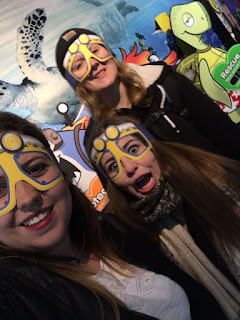At the beginning,
we took the underground to get to Waterloo Station. That was our very first
experience using a tube this week. It was a bit chaotic because nobody really
knew where we had to go to get to the tube and out of the station again, so we
just followed our teacher who knew exactly where we needed to go. Though there
were so many busy people running in different directions, we did keep track of
Mr. Meier and his bright, green blamie.
Right after
we got out of the dark underground system, we started our little walk to London
Eye Pier. In this area we were directly beneath the London Eye. But since no
one of us were interested in taking a ride on the London Eye, we simply skipped
that part by gazed and only at it from the pier.
Following this we took a boat ride to Tower Pier. It took us approximately
20min, enough time to relax our feet after the long walks. We crossed 6
bridges, including London and Millenium Bridge. And we had enough time to look
at the skyline.
Shortly after our arrival at the Tower Millenium Pier we walked over Tower
Bridge towards Borough Market. Along the Queens Walk we passed Hayes Gallery
and got a phone call from 3 of our classmates who had got lost on the other
side of the Thames. We waited for them, as they were directed to our meeting
point via whatsapp. Fortunately, Mr. Meier knew where we were.
At Borough Market,
we could choose food from different cultures all around world and rest our
hired yet again feet. After our break, we headed towards our next stop; Sky
Garden.
Most of us had never seen a building this high before. We had to undergo a
security check. A Chinese guy doing the procedure tried to communicate with us,
saying some Tirolian words like: “Grias di.”, “Pfiat di” and “Servus”. On top
of sky garden, we had the best magnificent view over London. We got to get an
all-around impression of the city. Some of us ordered some drinks (non-alcoholic
drinks, of course).
Since that
was the last stop of our second day, we decided to go home to our host
families. We took the underground and the national rail to Mottingham station.
Our host parents picked us up, we ate dinner and went to sleep.
What a nice
second day in London.
Written by Eva Maria Haßlwanter, Nadine Schnitzler, Sara Underrain

























